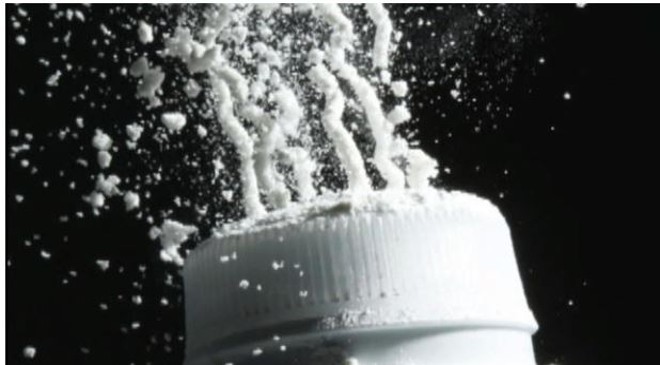A courtroom loss by Johnson & Johnson is threatening a legal maneuver developed by a handful of the most profitable companies in the world to fight lawsuits.
A federal appeals court in Philadelphia found that J&J is too rich to use bankruptcy to resolve more than 40,000 cancer claims over its baby powder. The company has vowed to appeal in order to preserve a legal tactic known to critics as the Texas Two-Step that has been tried by industrial conglomerate 3M Co. and lumber giant Georgia-Pacific.
Also Read– Tips for Student Loan Borrowers Waiting for Answers on Debt Relief
After spending more than $100 million in legal fees, J&J had its strategy thrown out by a three-judge panel, which sided with cancer victims. The judges ruled that J&J wrongly put a specially created unit, LTL Management, into bankruptcy to block juries around the country from hearing the lawsuits.
The ruling sent J&J’s stock tumbling Monday by 3.7% to $162, its worst day since June 2020 and several of its most traded bonds fell less than 0.5%. Shares fluctuated between gains and losses before ending the next day higher by 0.9%, closing at $163.42.
“I don’t think we’ll see anybody else try this,” said Carl Tobias, a University of Richmond law professor who teaches classes about products-liability law.
Legal Strategy
J&J, 3M and Georgia-Pacific have all used a strategy that begins with shifting billions of dollars in legal claims into small subsidiaries, which then file Chapter 11 bankruptcy cases. The parent companies agree to pay all creditors of those units, including the people suing them. While the units are under court protection, the parents try to halt the lawsuits and negotiate a final settlement.
3M is fighting in an appeals court in Chicago to halt 230,000 lawsuits it faces from current and former soldiers who claim their hearing was damaged by earplugs the company sold the US military. Its case differs slightly from the others because the unit 3M put in bankruptcy is older and has its own operations.
In bankruptcy court in Charlotte, North Carolina, Georgia-Pacific’s Bestwall unit is fighting people who claim asbestos in the company’s products poisoned their lungs.
Now, J&J will need to defend itself against claims that tainted talc in its baby powder causes cancer. The company has lost a number of such cases — including one that was appealed all the way to the US Supreme Court, before J&J was forced to pay more than $2 billion to one group of victims.
There have been ongoing talks aimed at settling the talc cases filed in both state and federal courts. Prior to J&J putting its unit into bankruptcy in 2021, the company offered to resolve the suits as much as $5 billion, according to Monday’s decision.
The court’s ruling likely will force J&J to may more. The world’s largest maker of health-care products could wind up paying as much as $10 billion to resolve its talc liabilities, JP Morgan analyst Chris Schott said Monday in a note to clients. An accord of that size would provide about $250,000 per claim, Wells Fargo’s Larry Biegelsen said in his own note.
Non-binding Decision
The decision is not binding in the 3M or Georgia-Pacific cases, but the central message — that profitable companies shouldn’t use bankruptcy to resolve lawsuits — may influence the judges overseeing them, legal scholars predict.
That’s because the J&J ruling comes from a court with long experience in bankruptcy cases caused by lawsuits. For decades, companies that made products with the cancer-causing substance asbestos filed bankruptcy in Delaware and New Jersey, taking advantage of Chapter 11 rules that let them keep operating while they worked out a deal with hundreds of thousands of people who had sued them. The federal appeals court in Philadelphia, which hears appeals from those courts, handled some of the biggest asbestos bankruptcies ever filed.
The major difference is that companies like chemical maker WR Grace and auto parts giant Federal-Mogul argued they could not afford to fight the asbestos lawsuits and so they filed bankruptcy themselves to deal with what is known in the industry as mass-tort exposure.
“The J&J decision makes the Texas Two-Step bankruptcy a much less reliable strategy,” said Ralph Brubaker, a professor at University of Illinois College of Law. “Solvent entities using the bankruptcy process to resolve their mass-tort exposure is clearly up for grabs and raises profound issues that judges are and will continue to seriously struggle with.”
The Philadelphia judges found that only companies directly threatened with financial troubles can use bankruptcy. Since J&J itself never claimed to be in immediate danger, it can’t benefit from Chapter 11 of the bankruptcy code by putting a unit under court protection, the judges found.
Also Read– China Says Covid Deaths Fell Even as Lunar Holiday Spread Virus
Challenge Ruling
Not only does the ruling have an effect on bankruptcy court, but it reinforces the vitality and legitimacy of the regular tort system in both the state and federal courts, plaintiffs’ lawyers say. J&J’s attorney had complained about runaway juries handing out excessive verdicts in the talc cases.
Don Migliore, a South Carolina-based lawyer representing former talc users suing J&J, said he was heartened to see J&J’s attempt to do an end-run around the regular system for resolving civil disputes through the courts was squashed. “The MDL system works,” he said. “Hopefully, other courts will take the financial-distress requirements for good-faith bankruptcy filings seriously.”
Multi-district litigations (MDLs) are used to consolidate suits filed in federal courts around the country before a single judge to facilitate information exchanges and hold test trials of the validity of plaintiffs’ claims. Many times, they result in settlements of thousands of cases. Thousands of talc cases are gathered before a judge in New Jersey.
J&J will challenge the ruling, the company said in a statement. The bankruptcy was filed in good faith to “equitably resolve” talc claims, the company said. 3M continues to try to resolve the earplugs lawsuits through court-ordered mediation, a company representative said. A representative of Koch Industries, which owns Georgia-Pacific, didn’t return messages requesting comment.
J&J can ask that all judges on the Philadelphia appeals court reconsider the three-judge panel’s decision. The company could also ask the US Supreme Court to hear its arguments the Chapter 11 case should be allowed to proceed.
After its major talc litigation loss, J&J developed the new legal strategy designed to block the cases from trial and force claimants to negotiate in the Chapter 11 case of LTL. J&J has long argued there is no good scientific evidence linking its baby powder to cancer. The company argued LTL’s case was the only way of managing talc litigation costs and ensuring victims get a fair payment.
LTL’s bankruptcy was the first Texas Two-Step to reach an appeals court. After victim groups challenged Kaplan’s ruling, the appeals court in Philadelphia agreed to expedite the case.
J&J’s strategy has been condemned by some legal scholars and members of Congress because the company received a major benefit of Chapter 11 rules — a halt to lawsuits — without filing for bankruptcy, where it would be subject to court oversight of its spending and other practices.
J&J is likely to ask the US Supreme Court to take on the issue, said Anthony Sabino, a law professor at St. John’s University. “I think it’s highly likely this is not the end, and Supreme Court review is a near certainty,” he said.
Still others, such as Tobias, doubt J&J can get enough high court votes to hear its appeal since several justices have recused themselves in the past over their investments in the company or ties to the talc industry. That’s exactly what happened in 2021, when the court refused to hear J&J’s challenge to a $2.1 billion damage award to women who blamed talc for their injuries.
Also Read– The Best Month To Buy a Car in 2023
“I’d rate J&J’s chances of being able to get the requisite number of votes at less than 20%,” Tobias said.
The J&J bankruptcy case is LTL Management LLC, 21-30589, US Bankruptcy Court, District of New Jersey (Trenton).

























